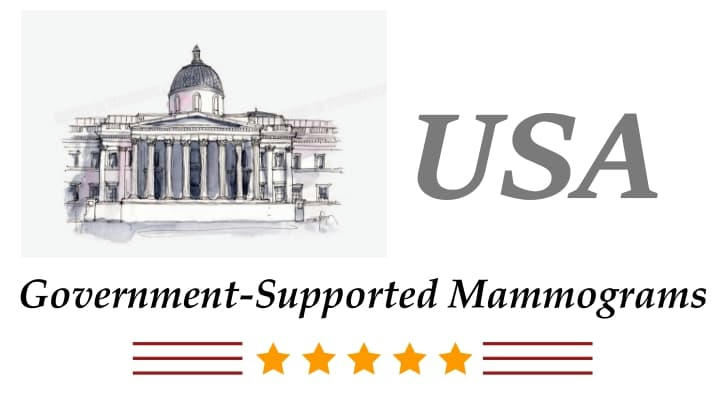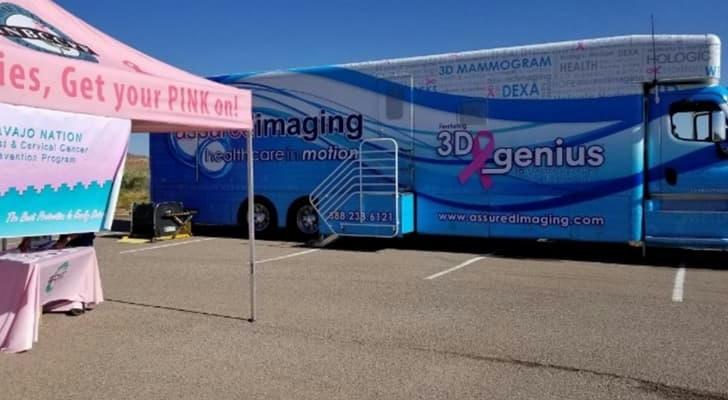Government-Supported Breast Cancer Screening with X-ray or Laser Technology for Low-Income Women
--- Read time: 7 mins
Breast cancer is the top cancer in U.S. women (30% of new cases). Mammograms save lives, but low-income women often can’t get them. Government-supported screenings are a lifesaving solution—and a win for health fairness.

Why Does the Government Support Mammograms?
Key Facts (2025 American Cancer Society Breast Cancer Statistics)
✔ 316,950 women will be diagnosed with invasive breast cancer.
✔ 59,080 new cases of ductal carcinoma in situ (DCIS) will be detected.
✔ 42,170 women will die from breast cancer.
Breast cancer primarily affects middle-aged and older women, with a median diagnosis age of 62. Only half of patients are diagnosed before this age, and cases under 45 are rare.
Lifetime risk: 1 in 8 women (~13%) will develop breast cancer.
Second-leading cause of cancer death in women (after lung cancer).
Mortality risk: ~1 in 43 (2.3%).
Why Mammograms Matter
Mammograms are the most effective way to detect breast cancer early—often before symptoms appear.
The U.S. Preventive Services Task Force (USPSTF) recommends:
✔ Biennial screenings for women 40–74.
✔ Individualized screening for women 40–49, especially those at higher risk.
Yet, millions of women—particularly those with low incomes or no insurance—skip this critical test due to cost, access barriers, or systemic gaps.
Government-supported mammogram programs help remove these obstacles, ensuring early detection, timely treatment, and higher survival rates—regardless of socioeconomic status.
The Role of Government-Supported Programs
Despite mammograms' proven benefits, cost, lack of awareness, and geographic barriers have limited access—especially in low-income and underserved communities.
To address this, federal and state initiatives are breaking down these obstacles:
1️⃣ National Breast and Cervical Cancer Early Detection Program (NBCCEDP)
Run by the CDC, NBCCEDP provides mammograms and diagnostic services to uninsured/underinsured women without the cost concern.
Since 1991, it has enabled over 15 million screenings, detecting thousands of cancers early and saving lives through timely treatment.
2️⃣ Medicare & Medicaid Coverage
Medicare Part B covers annual mammograms for women 40+ and a baseline screening for ages 35–39.
Medicaid offers state-specific coverage, expanding access for eligible individuals.
3️⃣ Affordable Care Act (ACA) Benefits
The ACA mandates that most private insurers cover mammograms (for women 40+) with no need to worry about costs as essential preventive care—boosting screening rates and eliminating financial barriers.
4️⃣ Mobile Mammography Units
Government-supported mobile clinics bring screenings directly to rural areas and urban "health deserts," overcoming transportation and geographic challenges for equitable access.
By investing in these solutions, public programs ensure lifesaving care reaches everyone—regardless of income, location, or insurance status.
Government-Supported Mammograms Deliver Real Benefits to All
Beyond improving individual health, these programs create wide-ranging advantages:
1.Reduced Breast Cancer Deaths
NCI data shows a 42% drop in breast cancer mortality (1989-2021), driven by early detection and better treatments—with government screening programs playing a key role.
2.Cost Savings
Early-stage treatment costs far less than late-stage care. Routine screenings lower expenses for families, insurers, and taxpayers through preventive care.
3.Health Equity
Targeted programs bridge gaps for underserved groups—including rural residents, minorities, and low-income women—ensuring equal access to life-saving screenings regardless of background.

True story: real case
Anna, a 46-year-old mom from rural New Mexico, never thought a government-supported mammogram would save her life.
When a mobile screening unit visited her community, she got checked. Doctors found early-stage breast cancer. Thanks to early detection, Anna is now cancer-free and urges others: “Don’t miss this opportunity.”
Conclusion: Ongoing Challenges and the Need for Sustained Support
Despite significant progress, disparities in healthcare access persist. To further strengthen mammography for low-income women:
1️⃣ Expand programs like NBCCEDP to increase coverage capacity
2️⃣ Incentivize healthcare providers to deliver culturally competent, language-appropriate services
3️⃣ Launch public awareness campaigns about screening availability and importance
4️⃣ Advocate for legislation ensuring universal access to preventive care, regardless of income or insurance status
Government-supported mammograms for low-income women represent a proven strategy to:
✔ Reduce breast cancer mortality
✔ Demonstrate how public health policies save lives
✔ Advance health equity
✔ Strengthen existing programs
✔ Address systemic barriers
✔ Guarantee all women - no matter their socioeconomic status - can access this life-saving preventive service
Mammograms remain one of the simplest, most reliable screening methods
Increased awareness + accessible, affordable services = most effective strategy to:
✔ Reduce breast cancer deaths
✔ Improve public health outcomes
